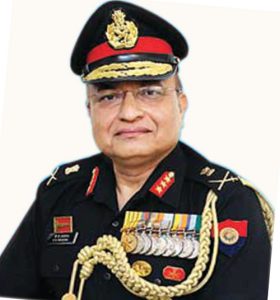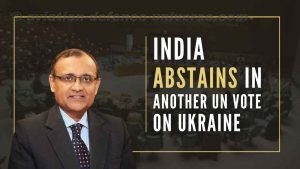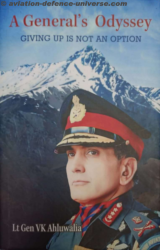
By Lt General Balli Pawar (Retd.)

Stockholm. 19 February 2022. The ongoing Ukraine-Russia crises seems to be getting more dangerous by the day with Russia continuing its military build up and rhetoric on the Ukraine border. As per American and European assessment currently Russia has in place 70 percent of its military deployment in terms of troops, equipment and firepower required for a potential assault on Ukraine. Simultaneously there has been no respite in Russia’s aggressive and threatening actions with the ongoing conduct of large scale war games and military exercises in Belarus involving air, sea and ground forces as well as threatening manoeuvres by its fleet in the Black Sea.
Current Situation
The latest statement coming out of White House based on US intelligence inputs that a Russian invasion could happen before the culmination of Winter Olympics, on 20 Feb certainly brings the situation on the brink of a major catastrophe. The current mood in Brussels the Capital of European Union (EU) is therefore no doubt nervous to say the least, leading to fears that Europe could be spiralling towards its worst security crisis in decades and could be closer to war than it has ever been since the breakup of former Yugoslavia. The NATO Secretary General Jens Stoltenberg during his visit to UK last week has termed this development as the most dangerous moment of post cold war period. While there has been frenzied shuttle diplomacy being witnessed across Europe to Moscow and Washington at the highest level to calm the situation, de-escalate and avoid a military invasion into Ukraine, there has been no major breakthrough or move forward so far.
However references have been made by the French President and the US Secretary of State recently in their press conferences that visiting the Minsk Agreement of 2014-15 between Russia and Ukraine could form the bases of moving forward. But Macron’s statement that Europe needs to relook at a ‘New European Security Order’ has led to criticism from leaders of many EU States including Sweden. The second direct telephonic dialogue between Biden and Putin lasting over an hour was held on 12 Feb without any positive outcome. One of the biggest worries in the minds of the Western Leaders is that President Putin is trying hard to shift the balance of power in Europe and using the current tensions to divide and rule – however the reality is that there do exist many divisions and dissentions amongst the EU nations which Putin is trying to exploit. There is also a lot of talk in the western world of imposing harsh and severe sanctions on Russia in case it invades Ukraine, though what these sanctions will be remains ambiguous at the moment. The total energy dependence on Russia for most of Europe and the NORD STREAM 2 gas pipeline to Germany though remains the elephant in the room. Putin’s visit to China on the inaugural day of the Winter Olympics in Beijing and meeting with President Xi Jinping and signing of new energy deals between the two countries needs to also be seen in this context.
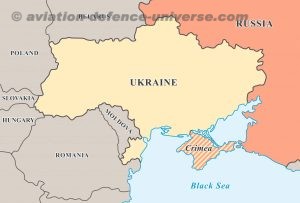
What is surprising is that no European leader has so far commented on President Xi’s statement supporting Russia’s demand of no further expansion of NATO, more so because this is the core issue in the current crises. In fact this statement has serious repercussions for States like Sweden and Finland which are presently not part of NATO though being EU members. The Ukraine crises has revived the NATO debate across the political spectrum in both the Nordic Countries whether they should now join the military alliance.
Russian Motives and Security Concerns
Despite the frenzied diplomatic activity over the last one month including two telephonic dialogues between presidents of Russia and America, there has been no change in the situation, rather it is spiralling closer to real possibility of war, Russian assurances to the contrary notwithstanding. Russia seeks legally enforceable security guarantees from the US and its NATO ally. In this context it has put forward a number of demands which include a ban on Ukraine entering NATO and a limit to deployment of troops and weapons to the alliance’s eastern flank – these have presently been rejected by both NATO and the US. Ever since the disintegration of the erstwhile USSR and break away of several Soviet States including Ukraine, Russia has been raising security concerns over the eastward expansion of NATO for a long time with no results and therefore decided to confront the problem head on resulting in the present crises – in fact 14 of the 15 breakaway States of former Soviet Union have already joined NATO.
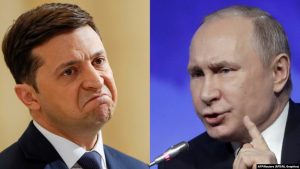
In the case of Ukraine, Russia cannot accept a former Soviet Republic with deep social and cultural ties Joining NATO and hence has drawn its red line on this issue. Furthermore, Ukraine going the NATO way is geo-strategically just not acceptable to Russia as this restricts Russian Naval Fleet operations to the Black Sea and further to the Mediterranean. Also despite the Minsk Agreement which brought a ceasefire, fighting has continued between Ukrainian forces and Russian backed rebels in South Eastern Ukraine’s area of Donetsk and Luhansk known as the Donbas region. Some defence analysts in Europe firmly believe that Russia is likely to use this massive military build-ups and exercises as form of leverage to signal to the West that it wants to rewrite the rules of the security order in Europe and actually taking military action would completely change the situation and deprive Russia of this leverage. In my opinion the Kremlin has invested too much in its very public manoeuvres over Ukraine to back down now, without something to show for it.
The US, NATO & EU
While the US and Russia remain the key players in this dangerously poised Ukraine crises, the US is not likely to get into a direct confrontation on the ground. Thus we see the US sending additional troops and equipment to Germany and Poland including F 15 jets. The US though has made it clear that tough and crippling sanctions will be imposed in case Russia invades Ukraine and has asked the EU to be on board for the sanctions to be effective. President Biden’s statement that the Nord Stream 2 will be closed down in case of an invasion during the visit of German Chancellor Olaf Scholz, was a clear message to Germany, a NATO and EU member who has remained ambiguous on this issue.
That there are divisions within EU and NATO for President Putin to exploit is no secret, but keeping the current situation in mind efforts are being made to present a united front, specially on sanctions despite the high energy requirement dependence on Russia by some member states. In fact, the European Commission is engaged in sustained internal diplomacy in an attempt to keep the 27 member EU states united over sanctions -the Biden administration is waiting impatiently for a forceful EU position on possible sanctions. Most NATO members specially the UK have been more forceful and united in their response to the Russian military build up, warning Russia of dire and serious consequences. More troops and armaments are being moved to member states like Poland and Romania to strengthen and shore up its eastern flank.
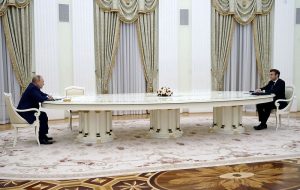
NATO Secretary General Jens Stoltenberg’s recent remarks during a news conference ‘that this is a dangerous moment for European Security, ‘with the Russian military build up going up and the warning time for a possible attack going down’ highlights the current situation. He further warned Russia that renewed Russian aggression will lead to more NATO presence not less and out rightly rejected Russia’s demands on the same. Keeping in mind the feasibility of the threat of war a number of European nations as well as US and Canada have started recalling their non essential embassy staff from Ukraine and have asked their citizens to leave the country earliest.
Sweden: Threat Perception & Military Preparedness
Being in Stockholm during the current Ukraine-Russia crises I thought it would be prudent to include Sweden’s own threat perception and preparedness especially since it’s a member of EU but not NATO though it cooperates closely with the alliance. Hence the first fallout from the crises
is the revival of the debate whether the time has come for both Sweden and Finland to join NATO. This assumes greater significance in view of the Russian Foreign Ministry making a statement in December last year that Sweden and Finland joining NATO would have serious military and political consequences. While this has not gone down well with the two Nordic neighbours but the debate to join or not to join NATO remains inconclusive with the present Swedish Government clearly not in favour.
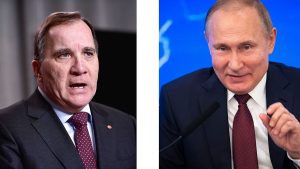
Sweden borders the Baltic Sea which also adjoins Russia and its Gotland Island located in the Baltic Sea is a ‘Geostrategic Gem’ which is the key to the Baltic Sea security- this is also referred to as Sweden’s aircraft carrier in the Baltic Sea. Seize Gotland and you control the airspace and sea access to Estonia, Latvia and Lithuania along with Finland. The Supreme Commander of the Swedish Armed Forces, Gen Micael Byden has stated recently in clear terms that Russia has always been the challenge in this region over the years and that we have never taken our eyes and ears off Russia, especially after the annexation of the Crimea Peninsula in the Black Sea.
Sweden is reinforcing the Gotland with additional troops and equipment and preparing for the worst case scenarios. Gen Micael Byden has recently visited the US and met the Chairman Joint Chiefs of Staff Gen Mark Milley to discuss the Ukraine crises – diplomatically there is clear support for Ukraine. Sweden has recently inducted the Patriot Air Defence System and Black Hawk helicopters from the US and has plans to acquire the Global Eye airborne early warning and control system. Further it has planned a 40 percent increase in defence spending to cater to investments in manpower and modernisation of the armed forces in order to enhance regional security. Despite all these measures the reality is that Sweden militarily has very limited capability to defend itself against a Russian onslaught on the Gotland and will need NATO’s support for such an eventuality- Sweden’s joining NATO therefore is only a matter of time.
Future Uncertain
The Russia-Ukraine Crises has reached an inflection point with the European stability and future of East- West relations hanging in balance. Diplomatic overtures and discussions between the US, NATO, EU and Russia have yielded no results so far – these are however continuing with the German Chancellor Scholz slated to visit Moscow on 15 Feb. A statement emanating from Kremlin on 14 Feb that a diplomatic solution to the escalating standoff with the West is still possible is a positive development.
The US and UK have further endorsed this by stating that though the situation is fragile but all hope is not lost for a diplomatic solution – these are good signs indeed. However the thorny issue of Ukraine joining NATO still remains deadlocked and on the ground the Russian military build up continues unabated with greater aggressive posturing, the latest being the Russian Black Sea Fleet consisting of 30 ships carrying out manoeuvres and drills in the Black Sea. The ongoing joint exercises with Belarus with a large number of Russian troops and equipment are nowhere near culmination, although Kremlin claims that some drills have ended.
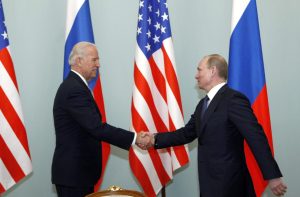
Courtesy : foreignbrief.com
As per US intelligence inputs Kremlin could be considering a false flag operation, thereby laying the ground work to have the option of fabricating a pretext for invasion of Ukraine just as in the case of Crimea in 2014. The numerous warnings by the US and its allies of imposing swift, crippling and severe sanctions and costs in case of invasion seem to have had no effect on Russia so far – there are already some sanctions in place after the Russia’s annexation of Crimea since 2014. The US National Security Adviser has reiterated again on 13 Feb that an invasion into Ukraine could occur mid week, while UKs Foreign Secretary has stated that the attack could happen at any time.
What Vladimir Putin plans to do next is unclear, but one thing is certain that having come this far, he is not backing off without some gains, the least being Ukraine denouncing its NATO membership desire. The situation remains extremely tense and scary and if Russia was to invade Ukraine, the results are likely to be disastrous both for the West and Russia, especially Europe. The biggest casualty in this war will be the human suffering on both sides in view of thousands dying including civilians and the large refugee influx into Eastern Europe from Ukraine.
However, a greater tragedy will be the demise of the rule based international order. China which already has shown scant regard for the rule based order by its unilateral actions in South China Sea, will certainly be emboldened to attempt the reunification of Taiwan. The entire world therefore awaits with abated breath and hopes and prays that this major catastrophe is averted.
(Lt Gen BS Pawar (Retd.) is a Delhi based defence analyst, former Head of the Army Aviation Corps and Commandant School of Artillery. He is currently in Stockholm . The views in the article are solely the author’s. He can be contacted at editor.adu@gmail.com.)


































